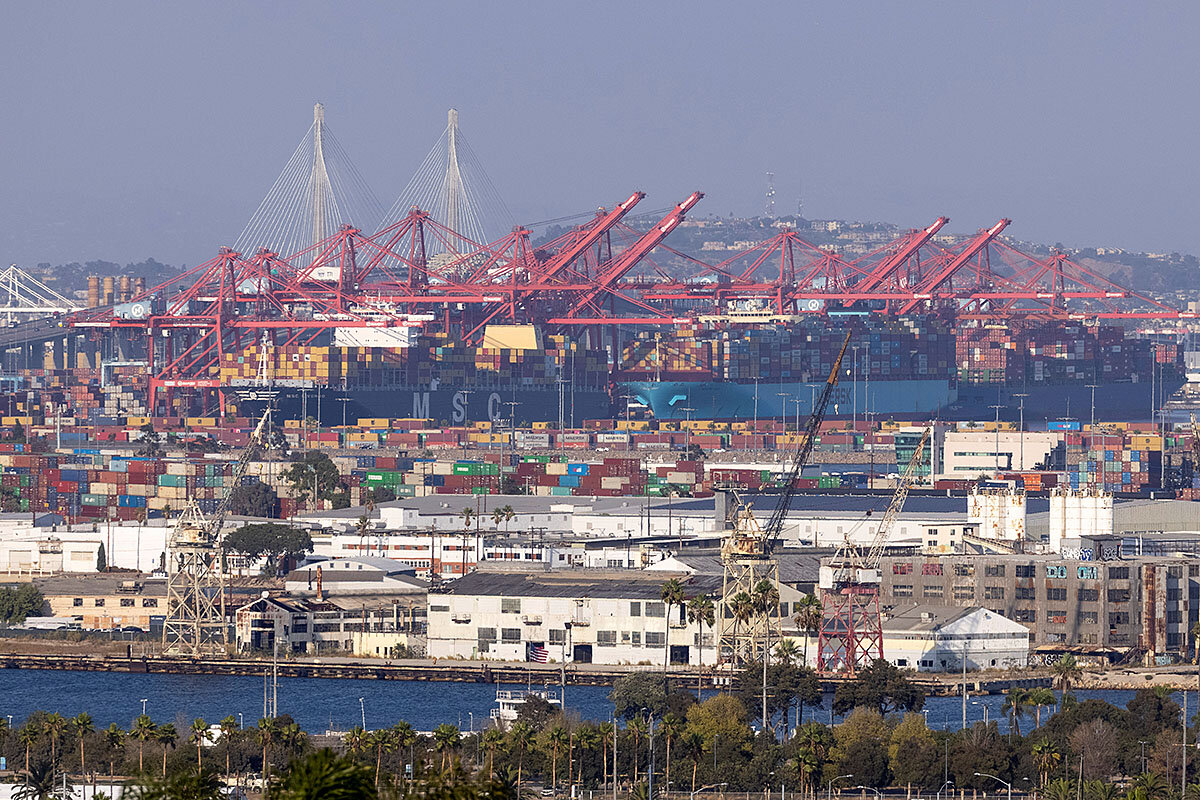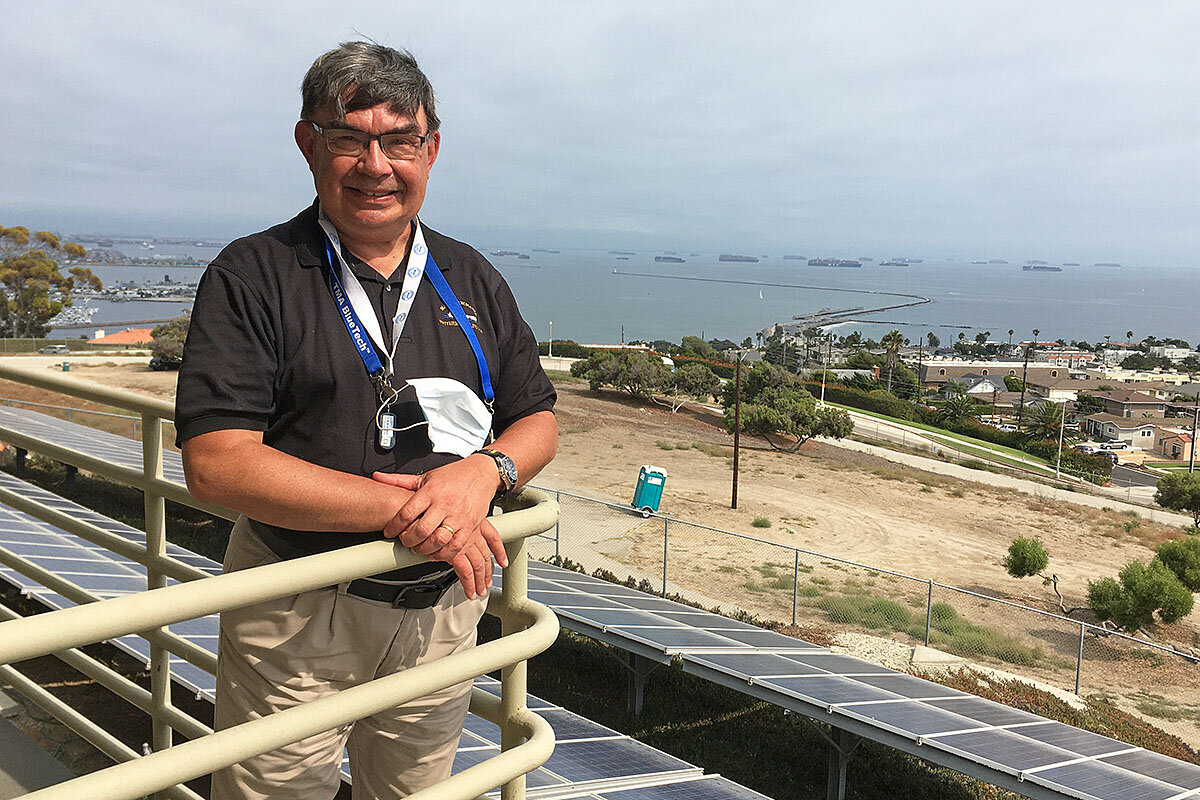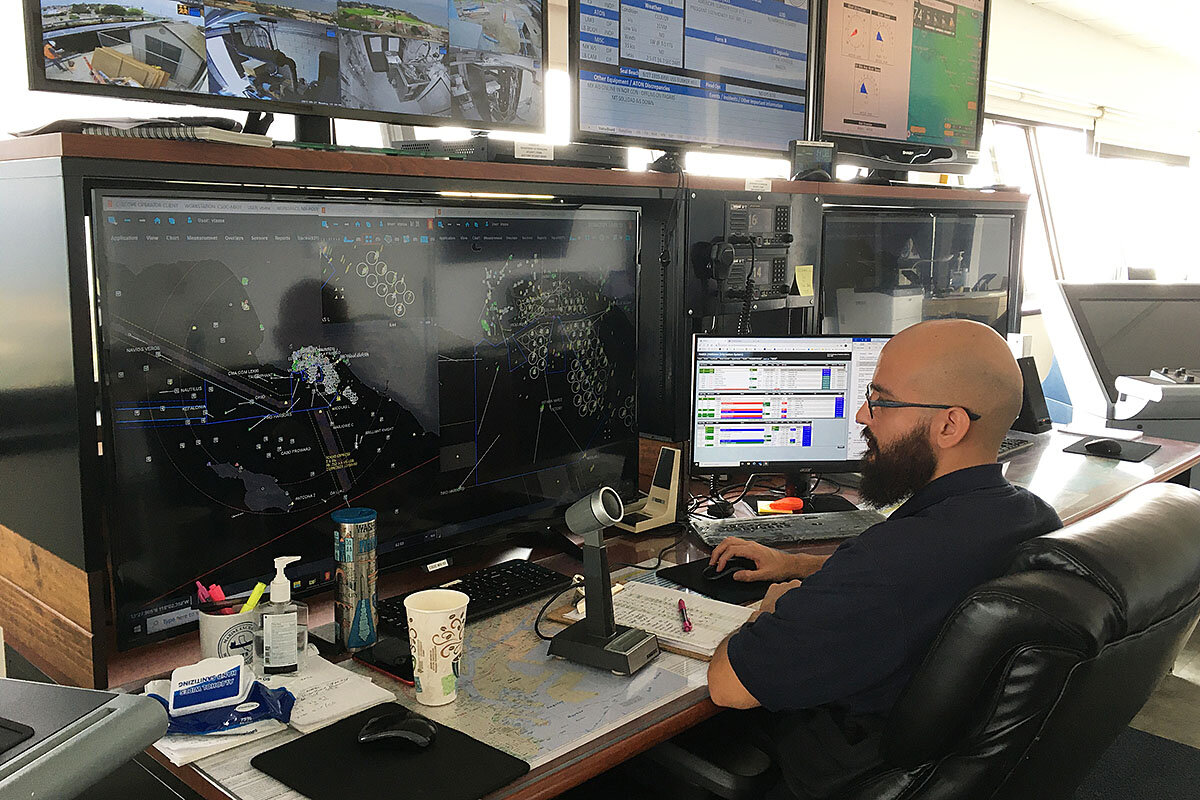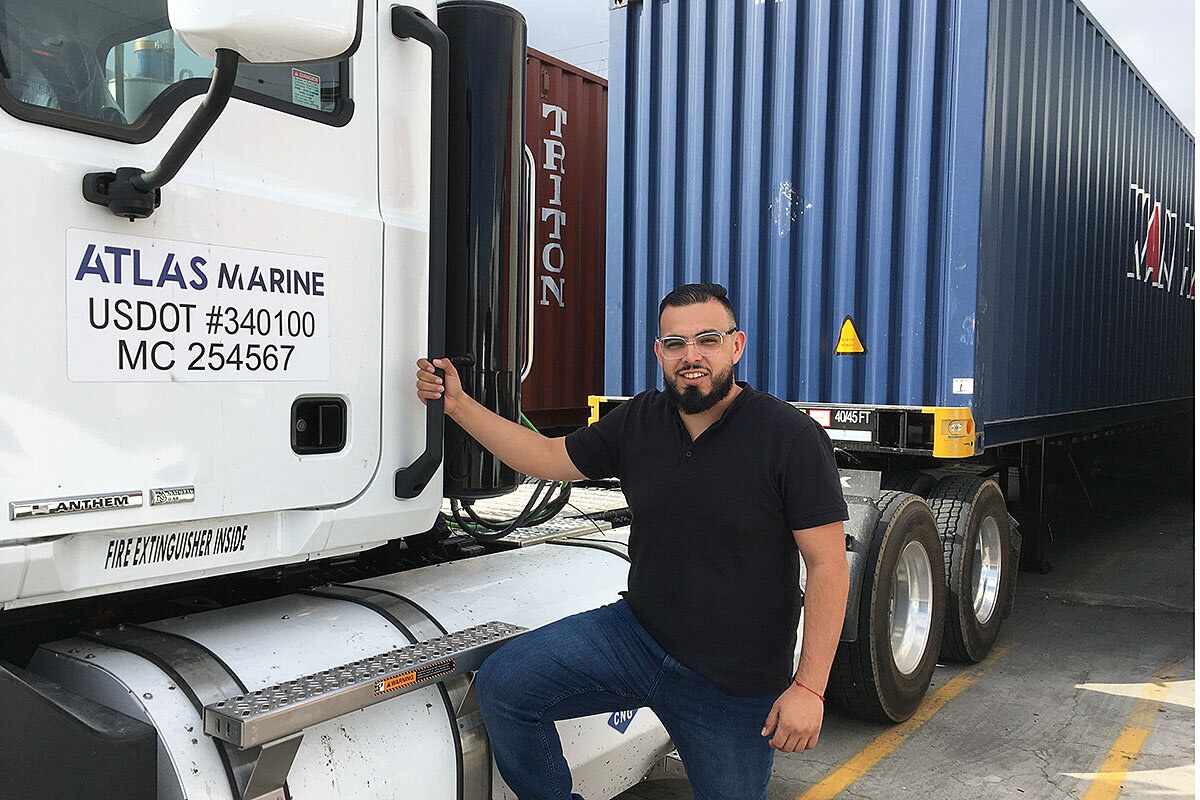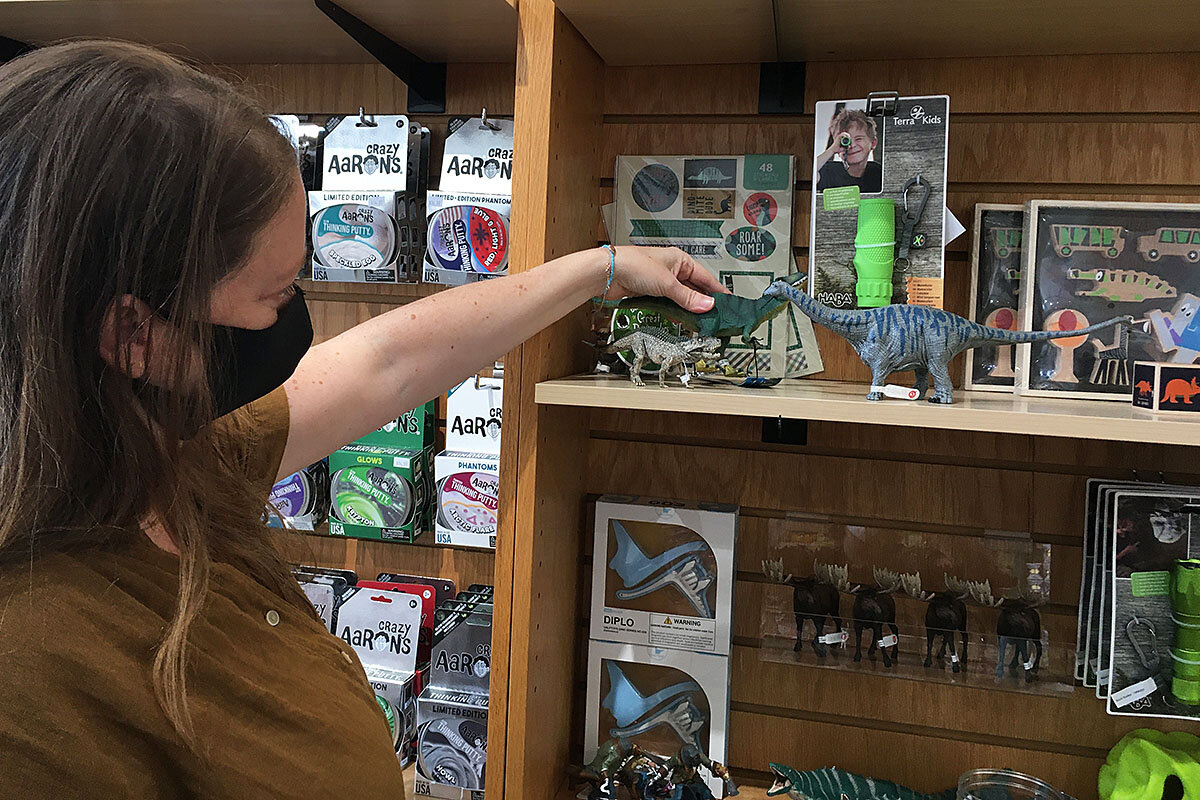‘Just keep it flowing.’ Three people working to untangle supply chain.
Loading...
| Los Angeles
Inside Miracle Mile Toys¬Ý&¬ÝGifts in Los Angeles, owner Christina Mullin is deftly guiding a customer past the disruption in toy deliveries caused by the global supply chain backup. Of specific concern is an adorable wooden train that carries safari animals.
‚ÄúWe‚Äôre out of that,‚Äù she apologizes to a woman who wants it for her little boy. Then follows up: ‚ÄúCan I take your name?‚Äù She‚Äôll contact the customer when it arrives. But the woman is from out of town, so Ms. Mullin suggests a different wooden train. It‚Äôs the same brand, and comes with a remote control. The mother is happy with that and leaves with an additional gift, a tray of plush, play sushi for her daughter. So California.¬Ý
‚ÄúI hope against hope that I get my order before Christmas,‚Äù says Ms. Mullin about the popular train and other items on back order. She‚Äôs no expert, she explains, but she thinks they might be on a container ship somewhere, because they‚Äôre made in China. Meanwhile, she‚Äôs looking to try some new products, and help customers ‚Äúfind a new favorite.‚Äù¬Ý
Why We Wrote This
For every supply chain chokepoint, there’s a person working to free it up. Three frontline workers walk us through the global backlog, showing the humanity behind the quest to restock your store’s empty shelves.
Ms. Mullin’s missing toys could very well be aboard one of the dozens of ships that are waiting to enter the port complex of Los Angeles and Long Beach. The twin ports move more than 40% of all cargo containers entering the United States.
Now the complex has become a critical chokepoint in a tangled global web of shortages and shipping troubles, affecting everything from school lunches to toilet paper (again!) to auto parts. To unravel what‚Äôs happening, the Monitor visited with three human links in the LA supply chain ‚Äì the director of ship traffic control for Southern California, a harbor trucker, and the toy-store retailer. Their stories illustrate the interconnectedness of the problems, and efforts to address them.¬Ý
‚ÄúAny small disruption is a multiplier,‚Äù when supply chains are stretched, says Gad Allon, a professor of operations, information, and decision at the Wharton School in Philadelphia. Ports that are already running near capacity can‚Äôt catch up when their operations are disrupted. ‚ÄúWhen you close a port in China for a week, it‚Äôs going to have a massive impact.‚Äù¬Ý¬Ý
That‚Äôs not a hypothetical statement. The bottleneck here in Los Angeles is just one link in a global supply chain that lacks lubrication.¬ÝFor months, factories in Asia have faced shortages of parts, raw materials, and workers amid¬Ýthe spread of the delta variant of the coronavirus. Ports in China have had to halt operations. The Suez Canal closure in March, when a giant ship ran aground, imposed lasting ripple effects. In recent weeks, Chinese factories have experienced power shortages due to energy rollbacks ordered by local governments trying to hit their emissions targets.¬Ý
Alongside squeezed supply is rebounding demand for goods. A surge in activity¬Ýis coming¬Ýfrom U.S. consumers, shopping from home and juiced by stimulus checks and low interest rates.¬Ý¬Ý
In the short term, companies will find workarounds to speed up deliveries of U.S.-bound goods, but there are no easy fixes. For example, airlines are flying less so they offer fewer cargo holds for transporting finished goods.
For the longer term, questions about how to bolster supply chains go beyond the pandemic and its effects, says Dan Breznitz, a professor of public policy at the University of Toronto who co-directs its Innovation Policy Lab.¬ÝEven once the current backlog is resolved, the challenge of managing risk in supply chains remains,¬Ýespecially amid worries about overreliance on imports from China
‚ÄúI think we have a serious problem with the way we produce stuff, and I don‚Äôt think this is going away,‚Äù says Professor Breznitz. ‚ÄúWe have a system that is very vulnerable.‚Äù¬Ý
Like air traffic control, but for ships
Capt. J. Kipling (Kip) Louttit has been around ports most of his life. His father was a welder in a shipyard in Pennsylvania, then enlisted in the Navy, and ended up in the publishing business in Manhattan. Because he loved the water, he bought a boat for his family when Kip was just 10 years old. The youngster found he was “really good at this water thing,” and went on to a decadeslong career with the U.S. Coast Guard, from which he is now retired.
He couldn’t stay away from the water, though, and now he’s the executive director of the Marine Exchange of Southern California, which controls ship traffic in and out of the ports of Los Angeles and Long Beach. From his vantage point on a hill near a former defense battery, he has a commanding view of the docks and cranes of the twin ports, San Pedro Bay, Santa Catalina Island, and the ships in the area.
“I’m the true romantic who is the son of a romantic,” he says.
He’s also an operations guy, repeating his mantra of “safe, secure, efficient, reliable, and environmentally sound marine transportation.” The past 18 months have put him and his team of 20 people to the test.
They have had to navigate the pandemic in a round-the-clock operation that meant no vacations last year as well as relocating the general manager to his home garage – where he is still working, set up with computers and radar. They have also had to manage a historic surge in ship traffic that has been breaking records for weeks on end, while communicating with ship captains who may not know the port complex and for whom English may not be their first language.
Because the ports are full, ships are directed to anchor in specific spots to await their turn. But those spots are also at capacity, and so ships are sent farther out to drift areas. The drifting ships turn off engines that power their propellers, repositioning themselves when necessary, and are advised to keep 2 miles apart. On Sept. 19, a record 73 container ships were at anchor or drifting. Normally, one container ship – or none – is at anchor. Captain Louttit calls this a “podium kicker” statistic. Pay attention.
Captain Louttit objects to descriptions of the port backup as a “traffic jam,” because it implies ships blocking the middle of the road. The shipping lanes in and out of the ports and up and down the coast are clear, with the Marine Exchange assigning and watching over “parking places” for ships in an orderly way, he explains.
‚ÄúWe can handle¬Ývirtually¬Ýany number of ships. It‚Äôs not like¬Ýlanding at¬ÝLAX, with one ship every minute,‚Äù he says, referring to the international airport. ‚ÄúBut the consequences of an accident are huge, particularly in terms of an oil spill fouling Southern California waters.‚Äù
The comment, made before this month‚Äôs oil spill, now seems prescient. Federal investigators say a cargo vessel‚Äôs anchor may have hooked an underwater pipeline, tearing it and spilling 140,000 gallons of oil along the Southern California coastline.¬ÝAnchor dragging is rare, and the anchor sites are away from critical infrastructure like pipelines and communication lines.¬Ý
Right now is peak shipping season in preparation for the holidays. The ports can normally handle this, but the problem is the backlog, says Captain Louttit. Last year the peak season was amplified by people buying home gym equipment, outfitting home offices, and remodeling their homes. Then add to that all the cash that people did not spend on vacations and theme parks, plus workers out because of illness or quarantine. It’s rippled across the docks to the trains, the trucks, the warehouses, the forklift drivers. “So the system choked, and they haven’t been able to clear it since.”
His answer? Put the entire goods movement system on a 24/7 work schedule, “to both clear the backlog, and then compete in the future.”
He’s not the only one thinking that way.
Truckers turned away at the ports
‚ÄúEverybody‚Äôs trying to get creative nowadays, and see how we can keep cargo flowing,‚Äù says Gio Marz, from the loading dock of Atlas Marine, a Long Beach trucking and warehouse company where he is the operations manager.¬Ý
When you grow up in the port area, you become one of three things, says Mr. Marz: a longshoreman on the docks, a refinery worker, or a trucker. Mr. Marz got his commercial driver’s license when he was 18, and he’s been driving trucks pretty much ever since. He sometimes still drives his own rig, and mentioned a personal experience from the spring that speaks directly to the hours issue.
To drop off or pick up a container, a trucker needs an appointment at a port terminal, which comes with a grace period. But with full ports, everyone is trying to get to their appointment on time, so they arrive early, which makes for a huge line. While some terminals are more lenient than others, it’s not unusual that the congestion causes truckers to miss their appointments and have to turn around.
That’s what happened with Mr. Marz earlier this year. He pulled up at a terminal at the Port of Los Angeles – the largest port in the U.S. – at the exact last minute of his grace period. “They told me, ‘Driver, you do not have an appointment.’” He had to turn around. “I literally made no money for four or five hours.” Normally, that would have been a $500 job.
Mr. Marz blames the work rules at the docks that bring everything to a full stop for lunch and shift changes. ‚ÄúJust keep it flowing,‚Äù he says, including starting earlier. Drivers would love to be able to pull up at 4 or 5 a.m. and avoid¬ÝLA traffic.¬Ý
Mario Cordero, executive director of the Port of Long Beach – America’s second-largest port, just 4 miles from the Port of Los Angeles – has been preaching the 24/7 message since before the pandemic. Asia’s on that schedule, he says, and given the long-term trajectory of growth in container shipping, the U.S. should be, too. Long Beach is trying out an extended schedule at one of its six terminals, but Mr. Cordero says moving to round-the-clock operations is going to take time. “For this to work, the supply chain has to buy into this. The truckers. The warehouses. The railroads. It’s not that simple.”
Even if the ports were open for longer, that still would not solve another big problem ‚Äì no place for truckers to deliver empty shipping containers. Long Beach cleared 64 acres of space for empties, but that‚Äôs now full, and some drivers are literally leaving empty containers in the streets. The empties are important for what‚Äôs underneath them ‚Äì chassis. Truckers need a chassis to haul a new, full container, and right now there‚Äôs a huge chassis shortage because so many of them are stuck under empty containers.¬Ý
Mr. Cordero says he‚Äôs looking for new places to put empty containers and is in discussion with ship lines that refuse to carry empties back to Asia. In the past, they have sent vessels to take back empties.¬Ý
‚ÄúIt all boils down to the chassis story,‚Äù says Mr. Marz, noting that half the containers in his company‚Äôs yard are empty. He‚Äôs trying to work around the problem by making sure that each transaction at a terminal involves a drop-off and a pickup, and by scouring the internet for export opportunities to load up empty containers. He thinks things will get worse before they get better, ‚Äúso do your Christmas shopping now.‚Äù¬Ý
The early holiday shopper
At Miracle Mile Toys & Gifts, a few customers have shopped for the holidays, and one purchased a dollhouse early to avoid being disappointed later. Ms. Mullin is storing it for her until closer to gifting time. Vendors have urged the experienced retailer to order early so she can secure a place in line, and she has followed their advice. As it is, a good portion of every order is either not available, or not due in until November, December, or even January. It’s all random, she says.
And yet, Ms. Mullin is keeping a ‚Äúpositive attitude.‚Äù After all, it‚Äôs a toy store! Grown-ups and kids come there to have fun ‚Äì to touch and squeeze the cushiony avocado, cupcake, and double cherry (no shortage of those); connect the wooden animal puzzle at the play station; or check out the costumes and capes in the loft. Hers is a neighborhood store, with repeat customers. Fortunately, she has a lot of stock from an earlier, larger location. And she is actively looking for alternatives ‚Äì turning to an American toy truck manufacturer, for instance, instead of a European brand.¬Ý
“There’s still plenty for me to choose from,” given the many vendors in the industry, she says. “It’s an opportunity to sometimes try something new.”
Staff writer Simon Montlake contributed to this article from Boston.



